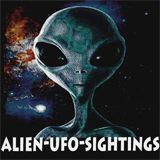Alien Base: The Evidence for Extraterrestrial Colonization of Earth – A FRUITFUL TRIP
By this time, Ludwig Pallmann was becoming increasingly concerned about his business affairs: a backlog of work awaited him in Lima. Yet so fascinating was the time he spent with the Itibi Rayans that when invited by them for a trip to Colombia, on 20 February 1967, he accepted immediately.
Another thing that bothered him was how Satu and Xiti, and others of their race, managed to travel around various countries without some sort of passports. What would happen if one of their men or women was arrested? ‘Little did I know,’ wrote Pallmann, ‘besides the fact that Xiti used a perfectly imitated Argentine passport, that all Itibi Rayans know exactly what to do and what not to do. For instance, in many countries, it is useless to show a passport if that passport does not show an entry stamp from the airport police. ‘On the trip to Colombia, Satu Ra decided not to use passports at all, but to proceed at night and only stay a very limited time and at a place where the chances of detection were absolutely out of the question.’ Shortly after 22.00, the craft departed for Colombia. As Pallmann described the trip: The extremely short criss-cross over great altitude and distance was a disappointment. Exactly like on the first flight near Huancayo to the Mirim River base, I did not notice, see, hear or feel anything at all. But I did observe, and with the utmost interest, the immediate and very clever control-craft protection carried out in the darkness of what I was able to understand to be a huge delta swamp of the Magdalena River south of Barranquilla, [on the Caribbean Sea coastline of] Colombia.
Within seconds the spacecraft had covered itself with a special liquid coming out of a million pores which, besides being a perfect element of camouflage and natural colouring, also served as a bacteria and insect repelling agent. This only lasted about five to ten minutes.
When finished, we immediately embarked in two very comfortable and very flat speedboats [which] on both sides, and on the bottom, were propelled by tiny and silent generators. There was no motor at all but a great number of air- jets, working in absolute silence. I figured the speed [at] about 30 to 35 m.p.h., and the trip itself lasted well over an hour . . . I was only able to speak to Mr Satu Ra, as Xiti had not received clearance to join the party and all the other crew members did not carry language computers. The group reached Barranquilla and found an isolated spot on the embankment.
Most of the Itibi Rayans wanted to rest and observe the neighbourhood, but Satu invited Pallmann to see the night life of Barranquilla, Colombia’s largest coastal town. Naturally, it was the fruit above all else which attracted Satu. ‘Satu Ra displayed a naivety that was astounding for one so astute as himself,’ wrote Pallmann, who had given his friend some Peruvian money to purchase samples. ‘He inspected the fruit, turning and prodding, but he did not buy anything.
Instead, he offered a stall-seller money merely for the privilege of inspecting the stock, smiled politely, then moved on to the next stall. Each stallholder accepted the money with alacrity . . . I suppose they looked on the moneyas a tip given to them by an eccentric foreigner.’
Pallmann, meanwhile, having been starved of ‘real’ food for several days, devoured a grilled half-chicken, upsetting Satu in the process. ‘I knew what he was thinking: that it was a crime to kill a bird just for a human being to eat it. At that moment, I must confess, I was out of sympathy with Itibi Rayan philosophy . . .’ Meanwhile, another member of the crew, ‘Mr Hua’, second-in-command of Satu’s spacecraft, appeared on the scene, and the trio set off for another market.
Examining a guayaba closely, Satu asked Pallmann for a detailed description of this, to him, unknown fruit. Having satisfied himself that the fruit could be cultivated, some was bought. An hour was spent looking for a specimen of the guayaba plant, but to no avail, so the following morning Pallmann went back to Barranquilla, where he was directed to the town of Santa Marta, across the river.
Here, his search eventually bore fruit when he located some cuttings, which were handed to Satu at the rendezvous point the following night. During the trip, Pallmann had bought himself a new camera, with a view to
taking some photographs of the Itibi Rayans, their plantation and their craft. But it was not to be. ‘As I feared, Satu Ra took a special interest in the camera,’ wrote Pallmann.
He told me about ‘Amat Mayna’, the science of soul based on ancient beliefs.
Not that my friends believe in reincarnation, but, definitely, they do not care for photos and pictures because of certain implications. I understood that, besides certain security restrictions, they simply do not care about ‘their looks’.
They are devoid of all vanity, pride or feeling of superiority . . . During all the time, and particularly where Xiti was concerned, I never saw them use a mirror. Satu confiscated the camera until Pallmann returned to Lima a week later.
